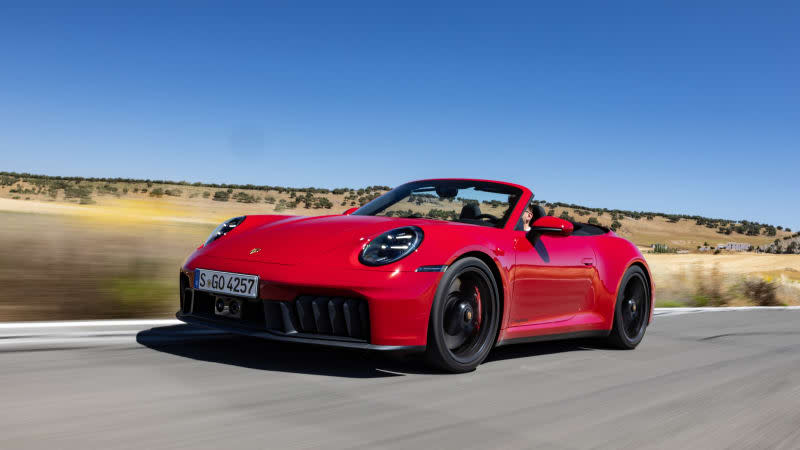2025 Porsche 911 GTS T-Hybrid First Drive: Don’t worry, it’s still the 911 we know and love
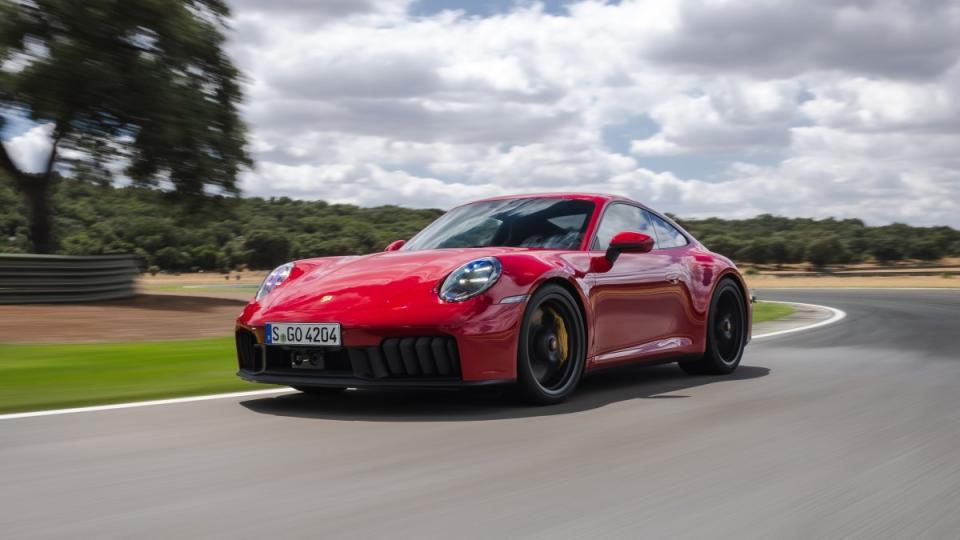
MÁLAGA, Spain -- The 2025 Porsche 911 Carrera GTS T-Hybrid doesn’t mind if you never detect it’s a hybrid. You will never accelerate with the engine unengaged. It doesn’t produce spacey electric motor sounds. The brakes are perfectly normal non-regenerative clampers to ensure there's no regenerative vagueness. Fuel economy is not the aim, nor is it meaningfully better than the outgoing non-hybrid. Curb weight is barely nudged upwards. Honestly, the best indicators of its electrified status are the “t-hybrid” decals you can have stuck to its doors. Beyond those dead giveaways, you have to put the GTS – the only model with the T-Hybrid powertrain – under a microscope of scrutiny to unearth its semi-green secrets.
This hybrid is unlike any other hybrid vehicle that Porsche, or any other carmaker, currently produces. Owners can just as easily ignore its electrified elements as they marvel at the mind-blowing tech hidden under its skin. The totally new 3.6-liter turbocharged flat-six is the righteous star of the show. Its single, massive turbo (Porsche engineers jokingly call it a truck turbo because of its size) brings back memories of the 930 Turbo, a car which just so happens to be celebrating its 50th anniversary this year. While the often-called “widow-maker” is naturally famous for its massive turbo “lag,” this new T-Hybrid is the opposite.
Instead of waiting … and waiting for boost, the GTS T-Hybrid wallops you forward with each and every prodding of the throttle, emulating a beefy, naturally aspirated flat-six with a fat torque curve. How is this possible? That single “eTurbo” is an electric-assisted exhaust gas turbocharger, with a tiny motor connected directly to the turbine shaft between the compressor and turbine wheels that instantly builds boost regardless of engine speed or load before exhaust gases reach it to keep things spinning the old-fashioned way. No wastegate is necessary since it regulates itself. The eTurbo draws power from a 1.9-kilowatt-hour lithium-ion battery pack (roughly the size of an elongated 12-volt battery, it resides in the empty space normally reserved for the optional extended-range gas tank, which loses 1.6 gallons of capacity as a result), but it also acts as a generator, producing about 15 horsepower of electrical power to both charge the battery pack or to feed a second electric motor.
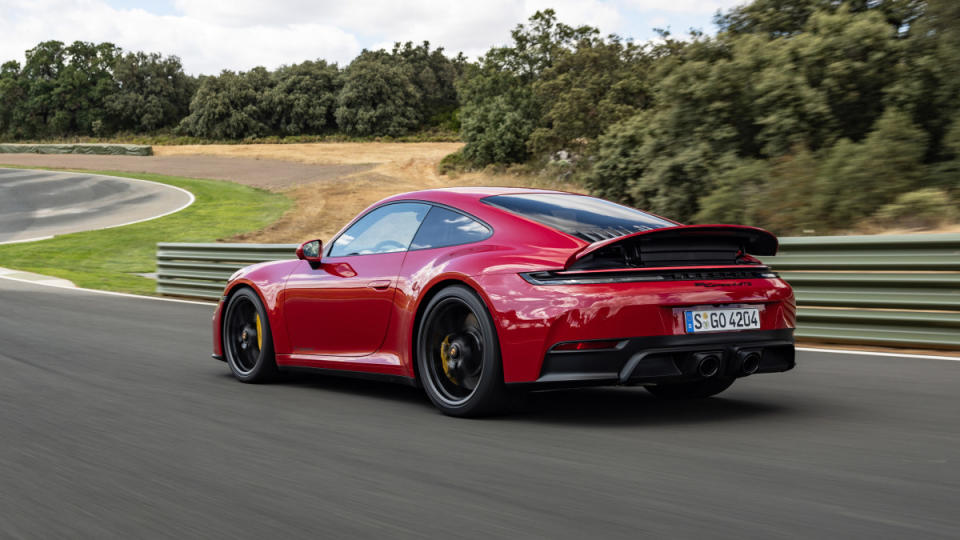
That one is a permanently excited synchronous electric motor integrated into a modified, now-standard eight-speed PDK dual-clutch transmission – it features reinforced clutches, gear sets, bevel-gear drive – that adds an extra 53 horsepower and 110 pound-feet of torque into the system. Similar to the turbo, the electric motor can add that same amount of power back into the battery by raising the load point on the engine. This occurs while during braking or coasting, but is not in fact regenerative braking. Yes, that means it's burning gasoline to charge the battery so it can then deploy that electric power when it's most-needed – we never said efficiency was the priority here. This unique arrangement is all on purpose, Porsche tells us, as 911 buyers want their cars to drive like a 911 always has, which means reliable and consistent brake feel is a must. All of these elements in the hybrid powertrain do their work covertly until you put the top down on a Cabriolet or Targa. Only then does the turbo’s devilishness reveal itself in the form of sound.
Again, unlike most turbocharged cars that solely rely on exhaust gases to keep the turbo spooled up, Porsche can keep the T-Hybrid turbo spinning with the electric motor. It doesn’t do this in every drive mode, but put the GTS in Sport Plus mode, and even when you lift and hop to the brake pedal, the turbo is kept spinning. It’s a quasi-anti-lag mode, and you can hear the fluttering and spool of the turbo in your right ear under braking, which is undeniably cool as hell. This simply means that when you step back into the throttle, it already feels like the engine is on boost, rocketing you away with naturally aspirated-like response.
You better be ready for the immediacy of the T-Hybrid’s power delivery, too. Having just stepped out of a 911 Dakar (it uses the original 992 GTS powertrain), the combination of instant electric torque and more system torque earlier – 368 pound-feet at just 1,500 rpm – is surprising. The first time we dug a little deeper into the throttle on corner exit while driving through switchback-like mountain roads, the test car stepped its rear end out, with far less effort than it takes to do so in non-hybrid 911s.
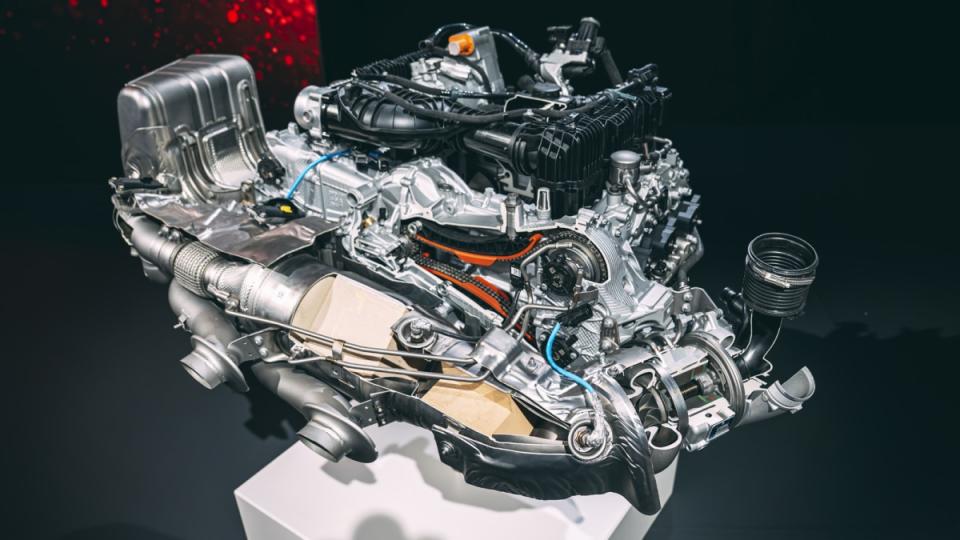
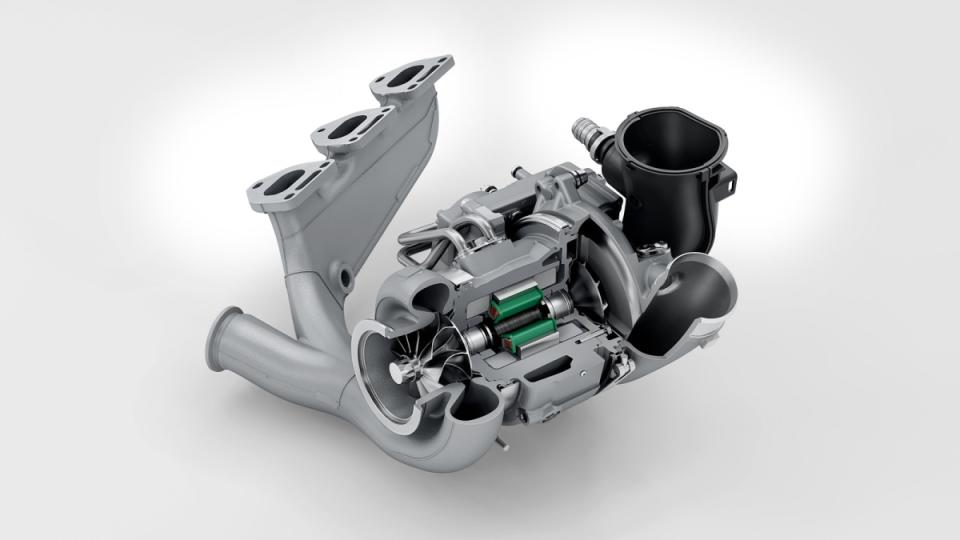
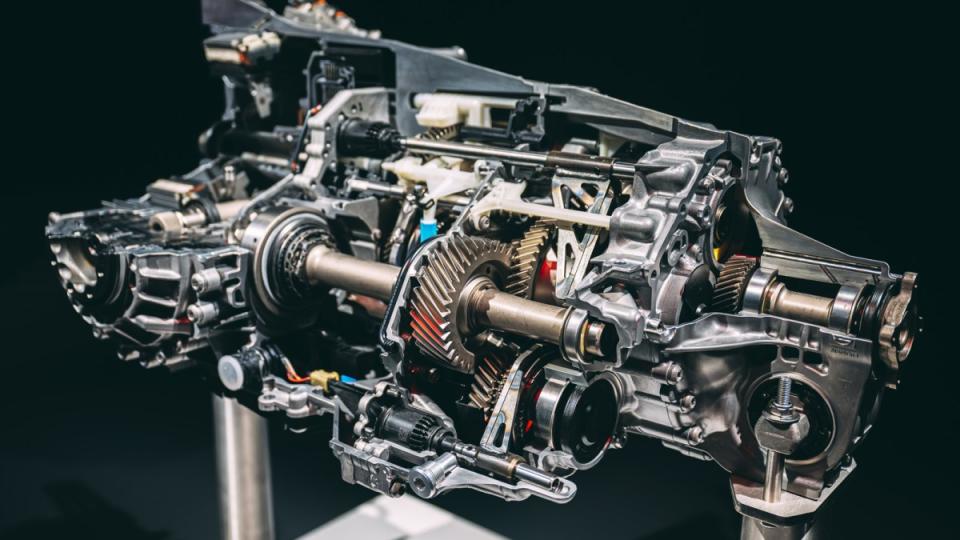
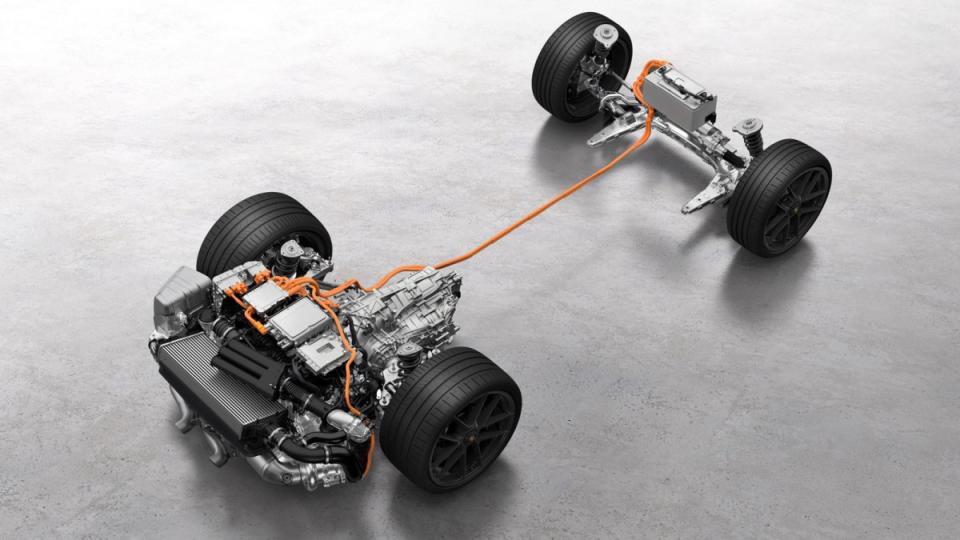
All of the above is a perfectly reasonable answer for when someone asks “Why hybridize the 911?” But Porsche has more succinct answers to such a question, too. For one, worldwide emissions standards are consistently creeping in. This new 3.6-liter flat-six meets those stringent standards by operating at the emissions-friendly air-fuel mixture of lambda 1. It might seem counterintuitive, but engineers tell us that a less stressed, larger engine is the solution it found to meet emissions standards. The engine itself features numerous efficiency improvements versus the previous 3.0-liter, as it adopts VarioCam technology and the solid roller cam followers Porsche uses in motorsport. The electric motor performs the function of the alternator, and the air conditioning compressor is powered electronically. Funnily, eliminating these accessory bits means the bigger 3.6-liter engine doesn’t take up as much space in the rear as the 3.0-liter it replaces, which is crucial, because that leaves room for the pulse inverter and DC-DC converter directly above the engine.
Enough with efficiencies, though, because even while the T-Hybrid is nicer to the environment, its total system output still bests the outgoing GTS with 532 horsepower and 449 pound-feet of torque combined, improvements of 59 and 29, respectively. Its 0-60 mph time dips by 0.3 second to only 2.9 seconds in the Coupe, and top speed is a blistering 194 mph. Most impressive of all, Porsche test development driver Jörg Bermeister chopped off 8.7 seconds around the Nürburgring Nordschleife with the new GTS, which speaks to improvements beyond just the hybrid system.
The ever-impressive Porsche Dynamic Chassis Control roll stabilization system is improved and now run off the high-voltage system of the hybrid. Ten-millimeter wider tires are fitted at the rear. Rear-axle steering is made standard on the GTS, and both the front and rear brakes are larger to cope with the extra power – the available carbon-ceramic 10-piston(!) fronts are specifically brought over from the 911 Turbo S.

 Yahoo Autos
Yahoo Autos 